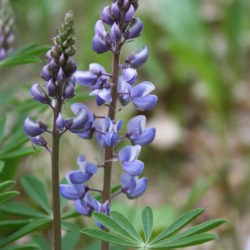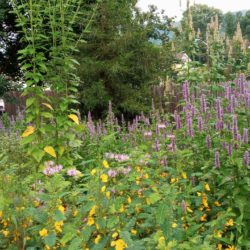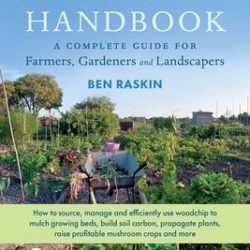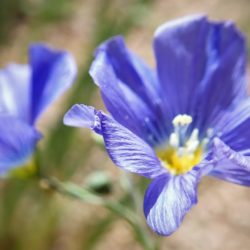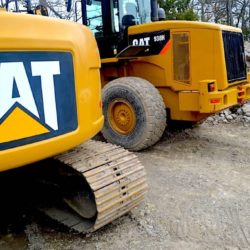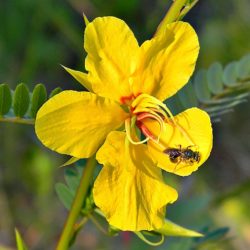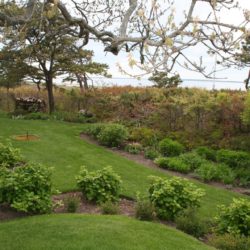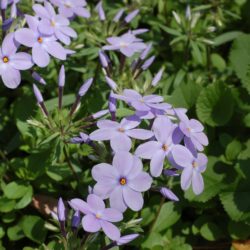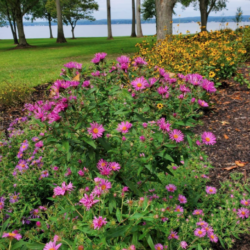Written by: Will Larson Growing native plants from seed is a constant exercise in replicating habitat. We expose the seed to specific pre-treatment conditions to simulate the contexts and pressures…
Installing and Maintaining Landscapes
Proper installation and maintenance of the ecologically designed landscape begins a pattern in which each component in the landscape supports the others. Ecological methods can save you time, resources, and money by keeping water and organic material on site and by utilizing organic soil amendments and chemical interventions only when testing shows they are necessary.
Tips, Tricks, and Techniques
Written by Zach McElgunn, ELA Staff This month’s tips, tricks, and techniques draw on the work and advice of Rosmarie Lohnes (Designer President, Helping Nature Heal). Rosmarie joined ELA members…
Restoring a Pitch Pine-Oak Upland Forest at Norcross Wildlife Sanctuary
Restoring a Pitch Pine-Oak Upland Forest at Norcross Wildlife Sanctuary Written by: Dan Wilder, Director of Wildlife Ecology, Norcross Wildlife Foundation Norcross Wildlife Foundation is located in south-central Massachusetts and…
Lawn to Meadow Season Three
By Leslie Duthie
This gardener decided to kill part of her lawn two years ago when we were encouraged to stay home due to the pandemic. Now in its third spring, follow the journey from surprises to successes to lessons learned. The barren lawn has been replaced with a shade and sun meadow with straightforward, easy steps that even a novice garden can copy.
The Woodchip Handbook
Reviewed by Dan Jaffe Wilder
The Woodchip Handbook is a small (~200 page) book dedicated to using woodchips on the landscape. Practicality is a key concept that runs throughout the book. Topics are introduced generally and quickly, followed by varying versions of how-tos, including case studies, common problems, and solutions.
Demonstration Garden Beautifies Area Teaches Others About Native Plants
By Lisa Olsen
In an active Denver neighborhood, volunteers proposed the Greenverien Garden to improve the neighborhood’s livability. They saw an opportunity to beautify the area by transforming the asphalt-covered strip on a busy street corner into a low-maintenance landscape to be enjoyed by residents, pollinators and visitors alike.
Helical Piles
By Bruce Wenning
Want to construct an addition to your home but are afraid of damaging treasured mature trees and plantings, not to mention the damage from heavy machinery upon the soil structure. Helical piles are the answer. This little-known pier foundation system requires less time and physical effort than “dig and pour” cement footings and continuous cement foundations.
Lawn Murder
By Leslie Duthie
Americans love their lawns yet they provide minimal habitat or ecological value for anything other than humans. From an ecological standpoint, I started to rethink the importance of the “lawn” and to consider a smaller lawn and? or? lawn alternatives that do not require fertilizer, water, or much mowing. Ultimately, I decided the best solution would be to replace the lawn with new gardens.
Five Reasons Synthetics Are No Longer Considered Best Practices
By Chip Osborne
All industries eventually arrive at best practices that represent the most productive and efficient method to deliver desired results while at the same time minimizing negative impact. While it is understood that all practices are subject to change over time, our industry changes have been motivated by the knowledge that the synthetics we use may have unintended consequences at times.
Dry Stone Wall Art
By Daniel Peterson
UNESCO inscribed the art of dry stone walling knowledge and techniques in its Intangible Cultural Heritage of Humanity list. Dry stone has been used by virtually every culture worldwide for thousands of years. My journey with stone started at a very early age on a farm in central Minnesota and then progressed into using stone in the landscape.
Eco-Answers from the Pros: Do I Need Mulch with Groundcover?
In areas where I am trying to grow ground covers that self-spread, I haven’t been using mulch, thinking the mulch will hinder the self-spread of the desired ground cover. Thus weeds and other things I didn’t want to grow in that space do fill in. Is it recommended to use mulch even when the ultimate goal is to have the ground covered with plants? Mulch will save me a lot of weeding time.
As Things Always Change, the Nature of Nature Remains the Same
By Kelsey Skaroff
2020 was obviously a remarkable year for many in adjusting work, relationships, and life in general in response to a pandemic, social justice movements, the economy, climate change, and politics. After a brief moment of uncertainly my job as Head Gardner went on as normal in this most unusual year.

